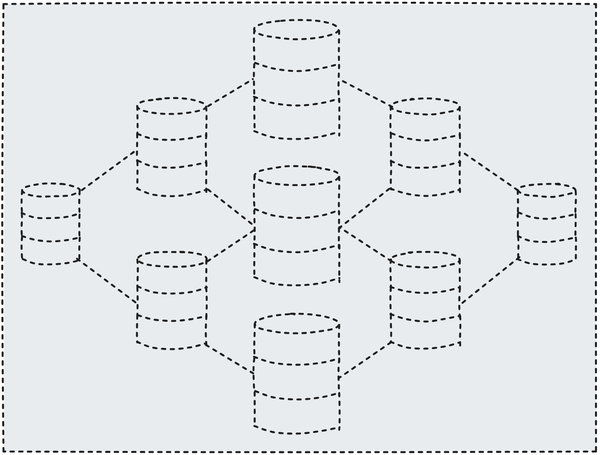3 Ways Debt Management Makes CRE More Profitable
When I left traditional consulting and moved into tech, one of the bigger culture shocks that I encountered was in recruiting. It wasn’t…

When I left traditional consulting and moved into tech, one of the bigger culture shocks that I encountered was in recruiting. It wasn’t hard to recruit for our consulting business — after all we had a cool job trading interest rate derivatives for CRE clients. Much more interesting than selling insurance.
Recruiting in tech in different. Well, at least when you’re trying to recruit for real estate fintech. There is so much objectively cool stuff going on in the world on CRE Tech. Some of the VR platforms that you can use to get a first-hand view of a design and layout are just mind-bogglingly cool. It’s pretty easy to recruit tech talent to work on something like that. The pitch is a little different when you’re building loan cashflows!
The same is true on the industry side. Most people get into real estate because they want to make something cool and interesting. They’ll spend hours modeling different business plans, lease terms, or disposition scenarios. They’ll agonize over design or architecture details to make the best possible use of a space as possible. Much less attention is paid to the financing, particularly the debt. A debt broker I’ve worked with put it the most succinctly.
Debt is the most expensive cost center you’re not thinking about.
It’s not your fault that you don’t pay attention to it. After all, for an operator the debt is a means to an end — building or buying an asset. For an acqusitions team, time spent modelling debt scenarios has diminishing returns, since it takes away from time you should be spending on the next deal. However, seemingly benign decisions can have significant effects on your project and portfolio returns. Therefore, it’s important that we have some sort of debt management strategy, a lack of one can materially harm your profitability.
If you’re currently not following any sort of debt strategy, these three can have big impacts on your return metrics.
Three Debt Management Strategies to Make Your Deals More Profitable
Align Your Debt Strategy With Your Disposition Habits
If you looked at all of the deals you’ve exited in the last 10 years, what would your average hold period be? How would that compare to your average debt maturity?
Back in my consulting days, I worked with a firm to analyze their borrowing and disposition habits. The decision makers of this firm tended to be very conservative, preferring long-term, fixed rate financings, usually 7–10 years in length. However, after reviewing their portfolio we discovered their average hold period for a property was only 4–5 years. On an average deal, this would result in ~50% of the original equity amount being lost to overpaying interest and prepayment penalties.
A loan’s prepayment penalty will have an outsized impact on your project’s returns. This is especially important if you have fixed rate debt. Almost all loans have a penalty of at least 1% of the outstanding loan amount, which can be as much or more than the origination fee! Almost all fixed rate loans have a rate-based penalty, which can easily be 10% or more of the total loan amount, depending on how early you prepay.
This is in addition to the additional interest expense for locking a rate for longer than what you would need. Borrowing for a longer term is more expensive than borrowing for a shorter term >90% of the time, no matter how you slice it (fixed vs floating, 5x5 ARM vs 10yr fixed, etc).
Simply aligning your disposition and borrowing habits can go a long ways towards ensuring more optimal debt structures.
Debt Optimization Strategies
This one will take a little discipline to do by hand, but isn’t a large time commitment to do on a quarterly or semi-annual basis. It works really well for minimizing your cost of debt within an equity fund or an entire portfolio.
The concept is simple, we want to minimize the cost of debt across our portfolio, not just individual assets. We can use well-performing assets to get cheaper funds to pay off more expensive debts on other properties.
For example, let’s say we have a portfolio of multi-family assets. Property A is funded by a senior loan at 4.50%, with a $2M mezz loan at a cost of 9%. Property B closed with Freddie Mac 3 years ago, and now qualifies for a $2M supplemental loan at 5%. We can take down the supplemental loan from Freddie to pay off the expensive mezz loan and make our portfolio as a whole more efficient.
Of course, don’t forget to take into account the cost of the prepayment penalty in your analysis, as well as your plans for all the assets this impacts.
Becoming Predictable
Another exercise in discipline, this involves routinely updating and forecasting critical loan details, like prepayment penalties, DSCR, and Debt Yield. Including a sensitivity metric can also make you more predictable, since you will know ahead of time what sort of market conditions can trigger a default or other covenant.
As an example, one of my favorites for floating rate debt is understanding how a standard interest rate hike (25 bps) affects DSCR. Although in the present environment (September 2022), modelling a 50 or 75 bps standard hike may be more appropriate. Similarly, it may also make sense to understand how a 1% change in NOI can affect your DSCR or Debt Yield as well.
This practice makes finding the answers to questions during unexpected events much faster and enables better decision making. It can also help you avoid or front-run costly covenant defaults.
Conclusion
Less attention is paid to debt by most operators because it’s often viewed as a costs-savings exercise, rather than revenue generating. However, a few simple practices can have large, positive impacts on our net profit, and therefore our investor returns/distributions. This can make you more competitive than your peers in winning deals or raising money.
If you liked this article, consider following me and subscribing to email updates whenever I post an article. You can also follow me on Twitter or connect with me on LinkedIn.





